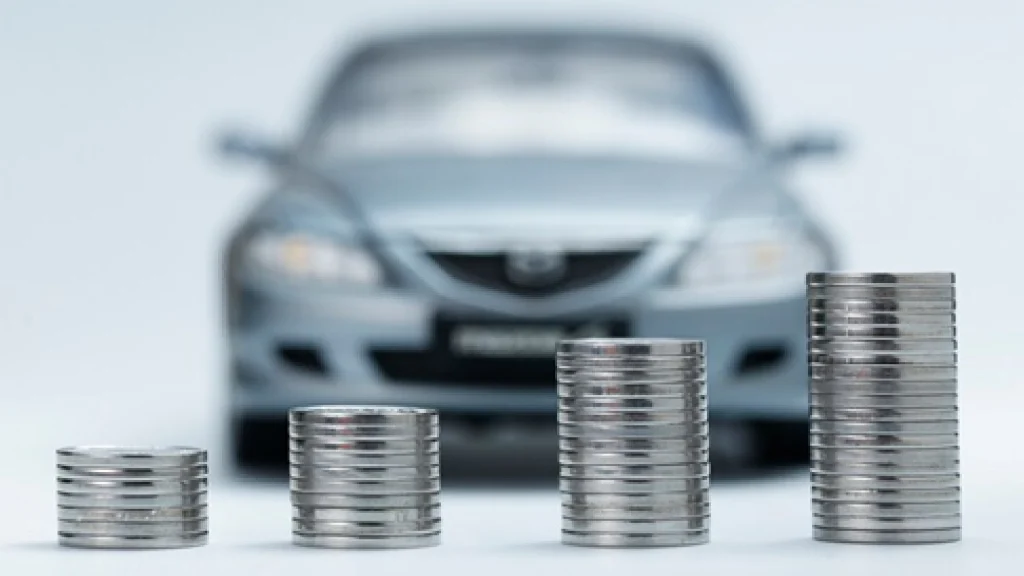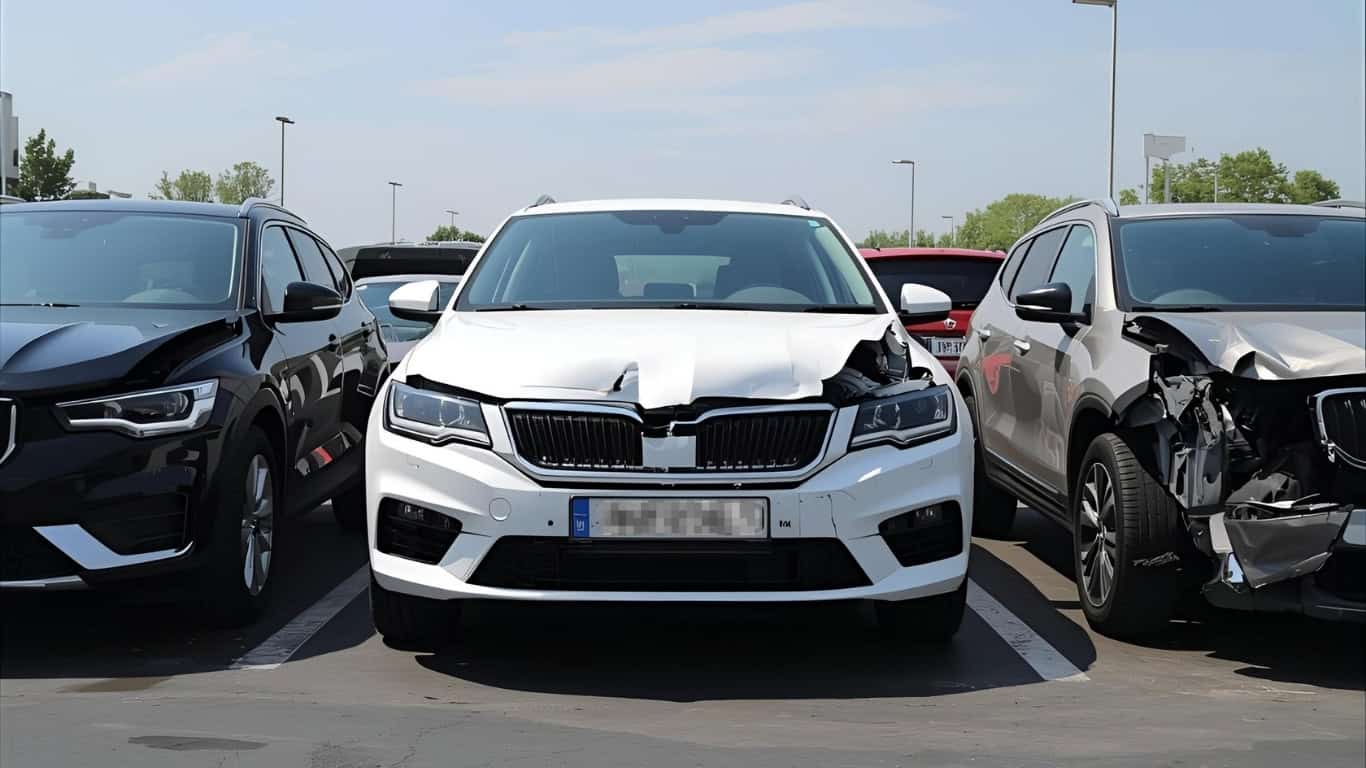Can your car’s value drop to $0? Learn how damage, age, and repairs impact its worth, plus tips to protect your investment and navigate insurance claims.

Total Loss vs. Diminished Value: When Is a Car Worth $0?
Car accidents, natural disasters, and even theft can drastically reduce your car’s value. But when does it drop to zero? The answer lies in understanding two key terms: total loss and diminished value.
- Total Loss: When repair costs exceed the car’s actual cash value (ACV), it’s declared a total loss.
- Diminished Value: Even after repairs, a car’s resale value may drop due to its accident history.
This article explores these concepts in detail, helping you navigate insurance claims, understand depreciation, and make informed decisions.
What Is Total Loss?
Definition of Total Loss
A car is declared a total loss when the cost of repairs exceeds its actual cash value (ACV). At this point, the insurance company deems it uneconomical to fix.
How Insurance Companies Determine Total Loss
Insurers use a “total loss threshold,” typically 70-80% of the car’s ACV. If repair costs exceed this threshold, the car is considered a total loss.
- Example: If your car’s ACV is 10,000 and repairs cost 8,000, it may be declared a total loss.
Examples of Total Loss Scenarios
- Severe Accident Damage: A collision that damages the frame or engine.
- Natural Disasters: Flood, fire, or hail damage.
- Theft Recovery: If the car is recovered but heavily damaged.
What Happens After a Total Loss Declaration?
- The insurer pays you the car’s ACV minus your deductible.
- You surrender the car to the insurer, who may sell it for scrap or parts.
What Is Diminished Value?
Definition of Diminished Value
Diminished value refers to the reduction in a car’s resale value after an accident, even after repairs.
Types of Diminished Value
- Inherent Diminished Value: Loss of value simply because the car has an accident history.
- Immediate Diminished Value: Value lost right after an accident, before repairs.
- Repair-Related Diminished Value: Value lost due to poor-quality repairs or mismatched parts.
How Diminished Value Affects Car Resale
Buyers often avoid cars with accident histories, leading to lower resale prices.
- Example: A car worth 15,000 before an accident might sell for only 12,000 after repairs.
Can You Recover Diminished Value?
Yes, but it’s not automatic. You may need to file a diminished value claim with your insurer or the at-fault driver’s insurer.
Key Differences Between Total Loss and Diminished Value
Impact on Car Value
- Total Loss: The car is worth $0, and you receive a payout based on its ACV.
- Diminished Value: The car retains some value but is worth less than before the accident.
Insurance Claims Process
- Total Loss: The insurer pays the car’s ACV and takes possession of the vehicle.
- Diminished Value: You may need to file a separate claim and provide evidence of the value loss.
Financial Implications for Car Owners
- Total Loss: You lose the car but receive a payout to replace it.
- Diminished Value: You keep the car but face lower resale value and potential out-of-pocket costs.
When Does a Car’s Value Drop to $0?
A car’s value doesn’t always drop to zero, but there are specific scenarios where it can effectively become worthless.
Understanding these situations can help you make informed decisions about your vehicle, whether you’re planning to sell it, repair it, or file an insurance claim.
Below, we’ll explore the factors that can reduce a car’s value to zero, the role of age, mileage, and condition, and what happens when repair costs exceed the car’s market value.

Factors That Reduce Car Value to Zero
Several factors can contribute to a car’s value dropping to zero. These include severe damage, age and mileage, and repair costs that exceed the car’s actual cash value (ACV).
1. Severe Damage
If a car is involved in a major accident or suffers extensive damage due to natural disasters (e.g., floods, fires, or hail), it may be deemed irreparable or unsafe to drive. In such cases, the car’s value can drop to zero because it is no longer functional or roadworthy.
Even if the car is repaired, it may still be considered a total loss by insurance companies, especially if the cost of repairs exceeds its ACV.
2. Age and Mileage
Older cars with high mileage are more likely to be declared total losses. As a car ages, its components wear out, and its market value decreases. High mileage further accelerates this depreciation.
Insurance companies often consider older, high-mileage vehicles to be less valuable, making them more likely to be written off if they sustain significant damage.
3. Repair Costs Exceeding ACV
One of the most common reasons a car’s value drops to zero is when the cost of repairs exceeds its actual cash value. For example, if a car is worth $2,000 but requires $3,000 in repairs, it may be declared a total loss.
In this case, the car’s value effectively drops to zero, and the owner may receive a payout from the insurance company based on the car’s ACV.

Role of Age, Mileage, and Condition
The age, mileage, and condition of a car play a significant role in determining its value. These factors are closely linked and can influence whether a car’s value drops to zero.
1. Older Cars with High Mileage
As a car ages, its value naturally depreciates. High mileage exacerbates this depreciation because it indicates that the car has been heavily used, leading to more wear and tear.
Older cars with high mileage are more likely to have mechanical issues, which can further reduce their value.
In some cases, the cost of maintaining or repairing an older car may outweigh its market value, making it effectively worthless.
2. Poor Maintenance
A car’s condition is a critical factor in determining its value. Poor maintenance can significantly reduce a car’s lifespan and resale value.
For example, neglecting regular oil changes, tire rotations, and other routine services can lead to costly repairs down the line.
A poorly maintained car is more likely to be declared a total loss if it sustains damage, as the cost of repairs may exceed its already diminished value.
When Repairs Exceed the Car’s Market Value
When the cost of repairing a car exceeds its actual cash value, the car’s value effectively drops to zero. This is a common scenario for older or high-mileage vehicles.
Example:
Imagine you own a 15-year-old car with an ACV of 2,000. If the car involved in an accident requires $3,000 in repairs, the insurance company will likely declare it a total loss.
This is because the cost of repairs exceeds the car’s market value. In this case, the car’s value drops to zero, and the insurance company will typically offer you a payout based on the car’s ACV.

How to Protect Your Car’s Value
While depreciation is inevitable, there are steps you can take to minimize the rate at which your car loses value. By following these tips, you can help maintain your car’s resale value and avoid situations where its value drops to zero.
1. Tips to Minimize Depreciation
- Maintain Regular Service Records: Keeping detailed records of all maintenance and repairs can demonstrate that your car has been well cared for. This can significantly boost its resale value.
- Avoid Accidents: Safe driving habits and adherence to traffic laws can help you avoid accidents that could damage your car and reduce its value.
- Choose Quality Repairs: If your car does require repairs, opt for certified repair shops that use high-quality parts. This ensures that your car remains in good condition and retains its value.
2. Understanding Your Insurance Policy
- Know Your Coverage: Familiarize yourself with your insurance policy’s coverage for total loss and diminished value claims. This will help you understand what to expect if your car is declared a total loss.
- Consider Gap Insurance: If you owe more on your car than it’s ACV, gap insurance can cover the difference in the event of a total loss. This can provide financial protection and peace of mind.
3. Filing a Diminished Value Claim
If your car has been in an accident and its value has decreased as a result, you may be able to file a diminished value claim. Here’s how:

Real-Life Scenarios
Scenario 1 – Total Loss
Jane’s car was severely damaged in a flood. The repair costs were $12,000, but the car’s ACV was only $10,000.
The insurer declared it a total loss and paid Jane $10,000 minus her $500 deductible.
Scenario 2 – Diminished Value
John’s car was in a minor accident. Repairs cost $5,000, but the car’s resale value dropped from $5,000, but the car’s resale value dropped from 20,000 to 17,000.
John Filed A Diminished Value Claim And Received $17,000. John Filed A Diminished Value Claim And Received 3,000 from the at-fault driver’s insurer.
Summary of Total Loss vs. Diminished Value
- Total Loss: Your car is worth $0, and you receive a payout based on its ACV.
- Diminished Value: Your car retains some value but is worth less than before the accident.
Final Tips for Car Owners
- Stay informed about your car’s value and insurance options.
- Maintain your car to minimize depreciation.
- File claims promptly and provide thorough documentation.
By understanding total loss and diminished value, you can make informed decisions and protect your investment.
Conclusion
A car’s value can drop to zero due to severe damage, high age and mileage, or repair costs that exceed its market value.
By understanding these factors and taking steps to protect your car’s value, you can minimize depreciation and avoid situations where your car becomes worthless.
Regular maintenance, safe driving, and a thorough understanding of your insurance policy are key to preserving your car’s value over time.




